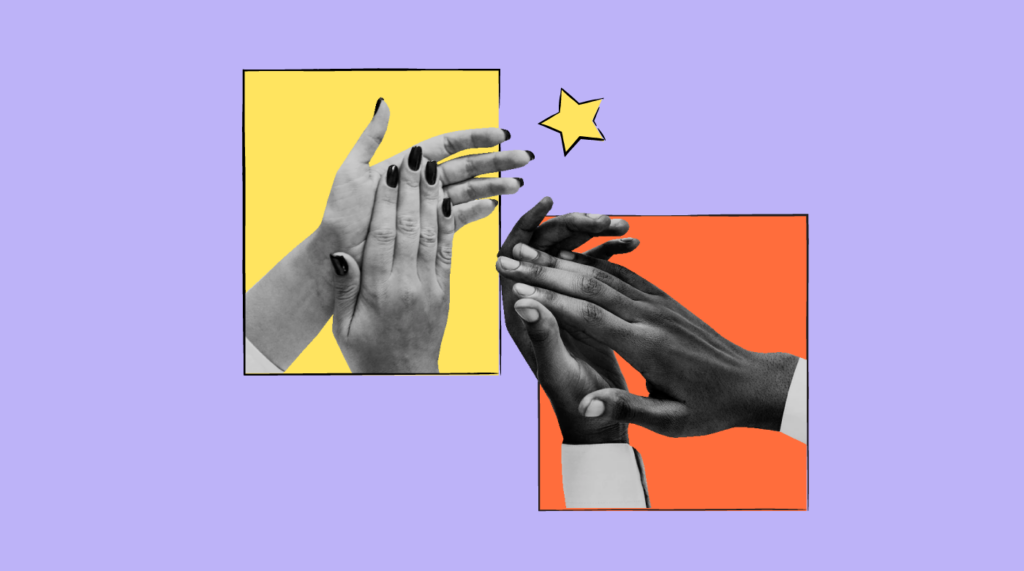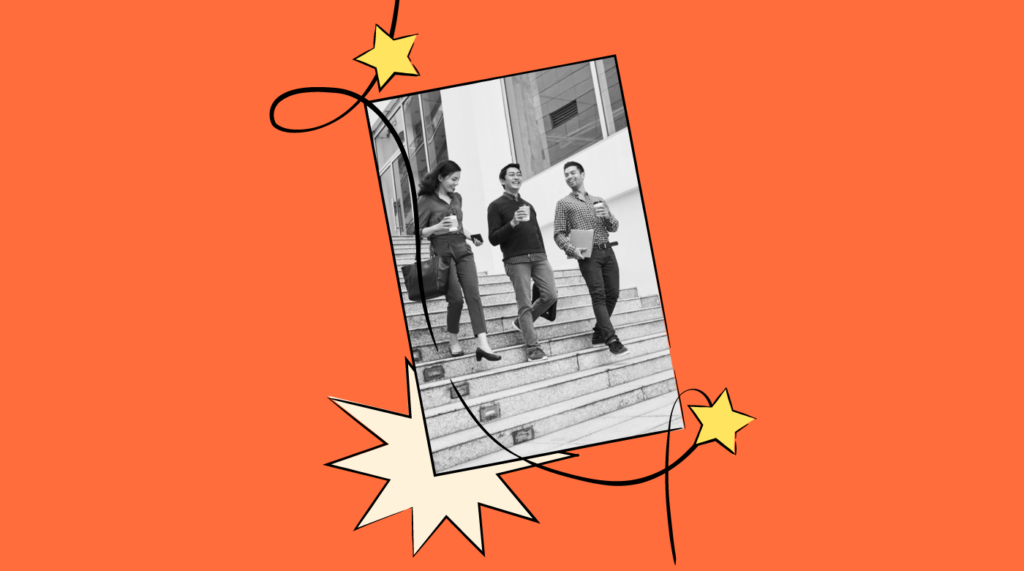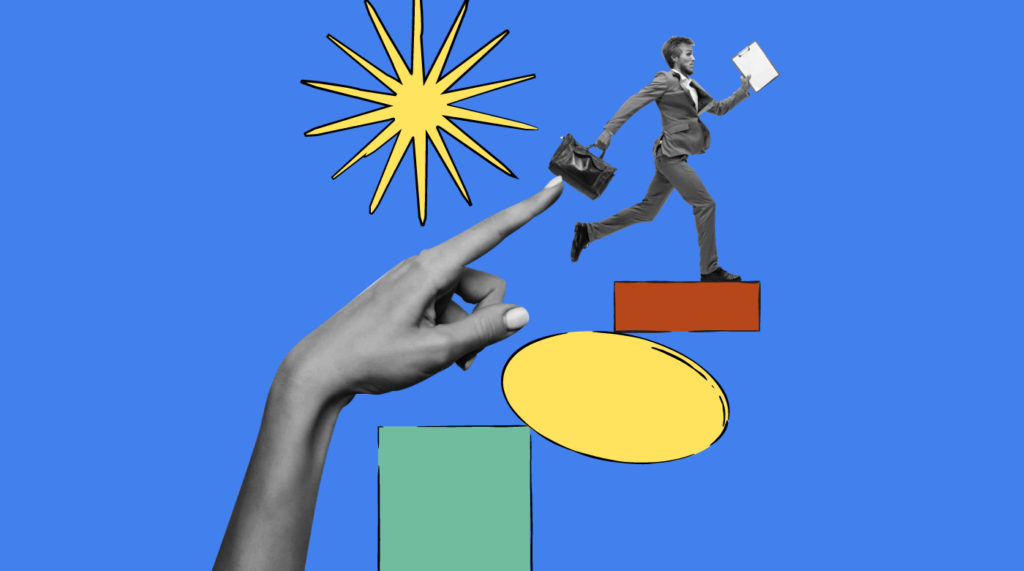You may be new to nudging in the workplace, but you’ve more than likely seen it your professional and personal life.
If you’ve ever had a parent or a partner try to subtly influence your behaviour by making small changes like changing the size of your dinner plates (or wine glass), then congratulations—you’ve been nudged!
In our professional lives, you’ve been subject to examples of nudging in the workplace that you probably didn’t even notice.
While we may think of nudging in a negative context, that’s generally not the case. Nudge theory looks at how nudging can be a positive in the workplace, and those small changes can make a big difference in overall workplace culture.
Nudges do not happen by accident. Just like data-driven advertising, there’s no coincidence that an employer’s actions will ultimately impact results. For ‘nudgees’ these actions may not even be noticeable but they’re an effective tool when it comes to behavioral change.
In this article, we’ll look closer at nudging theory and what constitutes a workplace nudge. We’ll also dive deeper into what makes nudges effective. Lastly, we’ll list examples of nudging in the workplace that may work well for your team.
What is nudging?
Think of a nudge as a trick for the brain. A nudge is like an unconscious reminder for our brains to do something, usually to perform a task in a certain way.
Think of the signs that we see every day and how they influence our behaviour. A no smoking sign is more of a prohibition, but a sign in a bathroom that advises employees to wash hands tells our brains that we should probably clean ours as well—even if we don’t work there.
Nudge theory takes this a step further. Richard Thaler and Cass Sunstein, authors of Improving Decisions About Health, Wealth, and Happiness helped lay the groundwork for nudge theory—about using nudges as a positive influence in our lives.
Their original work was with the ‘urinal fly’—a small decal in a urinal which, forgive us, gave men a target to aim for.

The move is subtle, but it made a huge impact! Less mess around the urinal meant cleaner restrooms and fewer cleaning costs, and those sorts of positive changes led to a happier environment overall. Richard Thaler later won the Nobel Prize for his work in behavioral science.
There were also great examples of nudge theory during the pandemic. There were more obvious examples, such as the ones that encouraged vaccination and companies that offered incentives (financial or otherwise) to employees who got vaccinated.
There were also simpler nudges, such as arrows on the floors of supermarkets to direct and separate traffic, or to remind shoppers of social distancing.
One key element to nudge theory, also known as choice architecture, is exactly that—the freedom of choice. Nudging is not forcing or obeying someone to follow a rule, nor it is providing a significant incentive.
Rather, it is a subtle move to encourage them to make better choices. You’re never forcing employees to make a choice; rather, you’re simply nudging them in the right direction.
Want to know how nudging might be helpful in influencing your workplace decision-making? Here are a few types of nudges that might work for your team:
Top ten examples of nudging in the workplace
Take the Stairs
If you want to encourage employees to take the stairs without berating them about their fitness, make taking the stairs easy and fun! Ensure that staircases are clearly marked, and consider fun signage in the stairwells to promote positive reinforcement.
Some office buildings have even gone so far as to paint a flight of stairs next to an escalator using fun colors, or even install piano keys (think of the movie ‘Big’) so that those active workers can make music as they go.
There’s always freedom of choice to use an escalator or elevator, but the nudge leads people to burn those few extra calories.
Congratulate a coworker

In remote workplaces, there are great examples of digital nudges that can be programmed into commonly-used software and apps.
One example is a platform called Assembly, which allows team members to give each other formal recognition using the Slack app for great work or showing great effort. If not Assembly, there are other similar integrations available as well.
Even despite remote work, this recognition can be cashed in as collected for monetary gifts and other tangible rewards. While there is no penalty for not using the system, that recognition highlights people’s behavior at its best, and can help encourage employee engagement.
See a leader, be a leader
Have you ever wondered why photos of the boss up around the office don’t seem to motivate employees? Think of where employees’ biases may be and how to work with those.
Any strong biases against management will make employees feel like they’re being watched and judged, even if that wasn’t the goal.
Instead, try a positive reinforcement tactic by displaying pictures of great historical leaders - Gandhi, Abraham Lincoln, Winston Churchill, etc.
You can find local examples, or ones that are appropriate for your workplace, but let their qualities influence people’s behavior and generate behavioral change.
Healthy snacks in full view
While workplaces need to be sensitive about criticizing employees’ eating habits, there are subtle types of nudges that will encourage a team to make better choices.
If a lunchroom is full of fruit as well as chocolate, and both are located in the same place with the same ease of access - who in their right mind would pick the fruit first?!?
Instead, put healthy snacks like fresh fruit, nuts etc. at easy access, or at eye level in a vending machine. That doesn’t mean that you need to get rid of chips, cookies, or chocolate - just consider moving them slightly out of view, or out of reach.
Encourage going full cycle
While most workplaces try and promote a culture of healthy living, nudge theory would suggest that there are better incentives to accomplish this goal than by simply pushing unwilling employees to sign up for a fitness challenge, or scolding them for making certain choices.
Instead, think about how employees are getting to work. While some employees may need to drive still, others might consider biking or carpooling if nudged to do so. Think installing bike racks and security cameras close to the front door or reserving prime parking spots for carpool vehicles.
Set on repeat
Workplace nudging can be as simple as something on your digital calendar. There are several tasks that employees do in a day, from checking emails to posting on a company’s social media to any other series of tasks that should be done at regular intervals.
Consider setting calendar invites with an option to repeat the task at set intervals. If the goal is to have someone check email daily at 9 a.m., or post on the corporate Instagram 3x a week, set an ongoing invitation for them to do so. They might move the timing around as needed on certain days, but the reminder serves as a great nudge.
Promote mobility

Employers often want to see their teams stay healthy and fit, but of course want to be careful not to shame an individual’s choices. This is where nudge theory comes in, and can help employees to make better decisions.
We often think of workplaces as having fitness challenges among colleagues, but there are other ways to encourage movement as well. Introduce standing desks at work stations to encourage standing, or move the printer far away so that anyone who needs to print gets a few steps in.
Also build in breaks that encourage people to walk or even stretch while working from home. Employers can enable an option for ‘walking meetings’ vs. gathering in a stuffy conference room - allowing important conversations to happen while on the move.
Socialize with others
None of us are islands, especially if we're all doing remote work. Think about what brings your employees together, and the behavioral change that occurs as a result.
Social media is how so many of us connect and socialize today, but social media alone is not sufficient to sustain those crucial workplace relationships. Instead, think about how you’ll host your corporate events and get togethers.
Try a little workplace nudging by mingling departments at events, or choosing a venue that encourages team members to meet someone new. Set regular calendar invites for optional after-work hang-outs to make people feel welcome. If breaking into small groups, include a bowl of conversation-generating questions at each table.
Power down
As workplaces focus on becoming more environmentally conscious, workplace nudging can provide great education both on the importance of being mindful about water and power usage, but also show a reality of just how much we consume day to day.
Consider leaving signs by light switches and electrical outlets about how much power lights and devices are draining when not in use. Some workplaces may also opt for signs in the washrooms about wasted water from unnecessary extra flushes, or leaving sinks running (if not automatic).
One of the most common places these signs have been found in offices for the last few years is by the water cooler. As small paper cups move out of style, more and more water coolers are accompanied by signs about saving the environment through fewer disposable plastic water bottles, or the impacts of the bottled water industry on the planet.
Where to nudge next
There are great case studies out there that talk about the importance of nudging and their impact on behavioral economics. The truth is that simple nudges work because they’re small reminders for our brain that we should do the right thing, and that we may even be rewarded for it.


